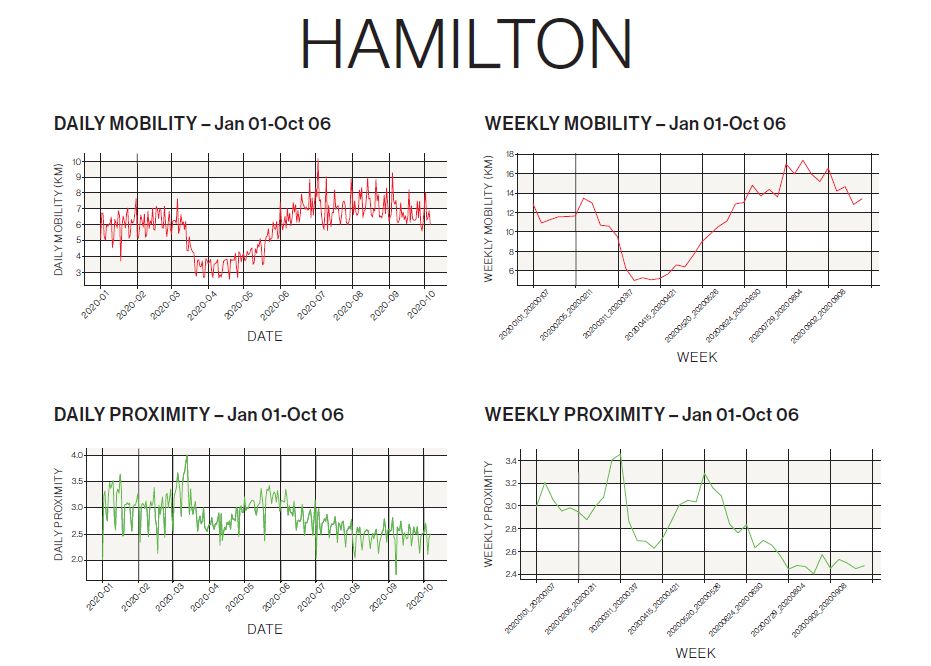Hamilton is achieving substantial physical distancing in public spaces.
An analysis of smartphone data by a group of University of Toronto researchers finds Canadians have significantly decreased their contacts with individuals outside of their households and maintained physical distancing while reopening businesses and services.
“It is a real achievement”, says University Professor Dr. Anita McGahan of the Rotman School of Business. “Hamiltonians should be proud”.
Smartphone data shows Hamiltonians are in close proximity, defined as two smartphones within an area with others (i.e. 50 metres) for at least five minutes in an hour. Hamiltonians are averaging approximately 2.5 close contacts per hour.
McGahan states this is “remarkable” as Hamiltonians are successfully increase their time outside of the household without an increase in their proximity to other individuals. During the summer, as the weather improved, Hamiltonians were outdoors more often, with daily mobility data reflective of weather. The data showed July 1st as the peak day for mobility in Hamilton this summer. The weather that day was sunny with a daytime high of 29°C.
The data showed an increase in close contacts during late May. Since that time, there has been a steady and sustained decline in close proximity averages.
McGahan says the research team’s analysis reveals that “mobility restrictions will not decrease proximity” to others. If there are restrictions, they need to be “strategically targeted” to address specific activities or actions in which the virus may spread. Close proximity has remained low, and at times below levels in March and April when lockdown measures were in effect, during the summer.
Weekly movements of people between neighbouring census divisions in the Greater Toronto-Hamilton show people are travelling locally. Trips by Hamiltonians to neighbouring census divisions are down 15% compared to the January 1 baseline. Compared to March 1st, trips are down by nearly a quarter.
“We need to sustain our gains”, says McGahan. “We need to innovate … how do we create safe places for people to be inside?”
McGahan notes there are many large indoor spaces with high capacity air circulation systems, such as sports arenas and large convention centres, which could be considered for physically distant activities. Municipalities also should explore outdoor heating to allow for safe distant social engagements.
The report, Mobility and Proximity in Canada During the COVID-19 Pandemic, co-author with Gabriel Cavalli, Brennan Lake, and Emanuele Pepe, is available for reading on the Munk School of Global Affairs & Public Policy website.
Production Details v. 1.0.0 First published: October 28, 2020 Last edited: October 28, 2020 Author: Joey Coleman Edit Record v. 1.0.0 original version

